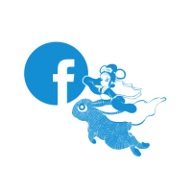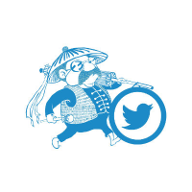









05 December 2016 by Roy Preece
Having spent many years investigating traditional stories and legends, Christopher Booker claimed to have identified seven universal story plots, which reflected perhaps an ancient “shared subconscious” among humankind. Defeating the Monster is the first of the seven universal plots described by Booker: a hero overcomes a “monster” which is threatening the hero’s life or the life of his community.
From classical Greece we have, for example, the well-known story of Theseus, who by bravery and cunning killed the Bull Monster, or Minotaur, and freed his people of Athens from the dreadful obligation of sacrificing seven young men and seven young girls each year. From the Dark Ages of northern Europe there is the familiar legend of the hero Beowulf who earned favours from a king by killing a dangerous dragon. (We must always remember that in European mythology dragons usually are evil creatures, quite unlike the divine Chinese dragons.)
More generally, we can replace the idea of a monster by any malign force, such as the Martian War Machines in War of the Worlds, the bandits in The Seven Samurai and its Western remake The Magnificent Seven, or Darth Vada in Star Wars. Similarly, the idea of a hero need not be limited to the conventional male individual, as above, but may be thought of as any protagonist or group of protagonists who oppose the evil force.
Such a simple plot, however, does not ‘make a story’. To do that it is necessary to go back to the stages of the ‘meta-plot’ or super plot: anticipation, dream, frustration, nightmare, resolution. These stages can be seen in The Magnificent Seven. Seven self-appointed warriors undertake to defend a poor village from a group of bandits; each time the bandits return, the situation of the heroes gets worse, going from dream to frustration to nightmare.
The New Year Beast is an apparently simple story for young children, yet in scarcely 600 words it comprises all the stages of the meta-plot. But is it really a ‘hero defeats monster’ type of plot?
One noticeable difference between European and Chinese stories is the role of the ‘hero’. In Western stories, even if there is a group of protagonists - rather than one hero, they usually are all heroic in nature: brave or with outstanding or special qualities. In the Chinese stories, however, the principal character is often an old man or ‘Uncle’ (or even a Billy Goat) who inspires a whole community of ordinary people to do brave things. There is no hero in the Western sense, but in this book the villagers heroically overcome their fears to defeat the New Year Monster.
In a twist to the plot, the villagers experience their nightmare stage at the beginning of the story. They have suffered so much from the monster over many years that their position seems hopeless. The story begins as the villagers decide to leave their village and run away, defeated, taking their animals with them.
Then a wise old man comes to the village and tells the people that they can defeat the New Year Monster; this may be seen as the anticipation stage as the people accept their task. The villagers busy themselves making preparations as instructed by the old man. They come to believe they can win. This may be seen as the dream stage when they are optimistic, believing everything will go well.
But when the fearsome monster appears, the villagers are frightened and are not so sure they really can defeat him after all. This is the frustration stage when it seems everything is going wrong. The villagers know that if they fail they will return to the nightmare stage, which is in all their minds.
‘Throw bamboo on the fire,’ says the old man. ‘The bamboo goes “Bang. Bang. Bang.” ’ The Monster runs away and is never seen again – the resolution stage.
When translating, and rewriting the stories we find it is helpful to be aware of these universal plots and to plan the books so that significant events are related to page endings, rather as a good thriller story has a ‘cliff-hanger’ at the end of each chapter. The New Year Beast has become one of our favourite books and is an excellent introduction for children to the Chinese New Year.